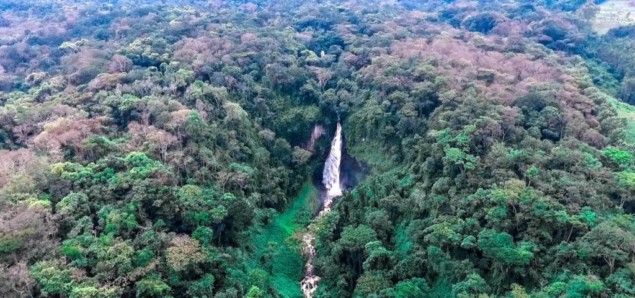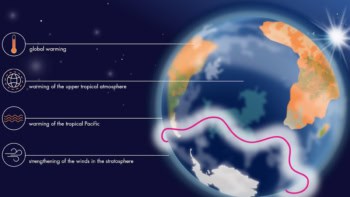
The planet’s greenery – prairie grasslands, riverine swamps, Sahel drylands, European woodlands, tropical rainforest and Alpine meadows – could be about to be overtaken by a huge vegetation change as the world warms at a dangerous rate.
The warning comes not from computer simulations of what could happen under the notorious “business-as-usual” scenario, in which humans go on burning ever greater quantities of fossil fuel, to raise the levels of greenhouse gases in the global atmosphere, but from a simple natural experiment while humans were still Neolithic nomads.
Between 21,000 and 14,000 years ago, near the end of the last Ice Age, the world warmed by between 4 °C and 7 °C. And the world’s plants preserved a register of the changes during that era.
An international research team reports in the journal Science that they collated and examined the data based on the fossilised pollen evidence of bygone ecosystems from 594 sites on every continent except Antarctica, to record the way forests died back, new species invaded, and the nature of the landscapes changed.
And, they say, there is evidence that climate change is already imposing a new plant hierarchy on the landscape, and major transformation could be on the way. But there are two big differences between the climate shift near the end of the last Ice Age and the present global warming.
Back then, the temperature rise, and the shifts in vegetation, took thousands of years. Then, the temperature shifted between familiar boundaries: glacial and interglacial.
But under the business-as-usual scenario, humans are now warming the world at a rate an estimated 65 times faster than late in the last Ice Age. And since the temperatures are already much higher, any changes in the next century or so could exceed anything the world experienced in the last two million years.
Diversity at risk
Climate scientists have always used the evidence of the past as a guide to future change. The difference is that instead of looking at very recent shifts or dramatic extinctions tens or hundreds of millions of years ago, researchers have focused on an era of change in which modern humans would still recognise almost all of the plants, fungi, birds, insects and mammals on the planet.
“If we allow climate change to go unchecked, the vegetation of this planet is going to look completely different than it does today, and that means a huge risk to the diversity of this planet,” said Jonathan Overpeck, of the University of Michigan, US, one of the scientists who launched the five-year study.
“We’re talking about global landscape change that is ubiquitous and dramatic. And we’re starting to see it in the United States, as well as around the globe.”
Too little progress
In Paris in 2015, some 195 nations, including the US, undertook to contain global warming to “well below” 2 °C by 2100. In fact, the planet has already warmed by almost 1 °C, the US has announced its withdrawal from the pact, and climate scientists have repeatedly warned that few of the national plans to limit greenhouse emissions go nearly far enough, and even fewer have begun to implement those plans.
The researchers calculate that if nations go on driving economies by coal, oil and natural gas combustion, the chance of large-scale change in the planet’s vegetation is more than 60%. If nations implement their Paris promises the probability of global-scale change is less than 45%. Most of this change will occur in this century and, because of the rate of warming, people now alive will see some of these vegetation shifts.
“We’re talking about the same amount of change in 10 to 20 thousand years that is going to be crammed into a century or two. Ecosystems are going to be scrambling to keep up,” said Stephen Jackson, who directs the US Geological Survey’s southwest climate adaptation centre, and is one of the co-authors. In the US West, forests incinerated by wildfires – in turn driven by drought and extremes of heat – may be colonized by unfamiliar species.
“You take the ponderosa pine forests of the Sky Islands and turn it into oak scrub – we are starting to see that,” he said.
“Then you can’t go up to those pine forests any more for shade or coolness or the experience of walking through a beautiful grove of trees.”
- This article first appeared at Climate News Network.



